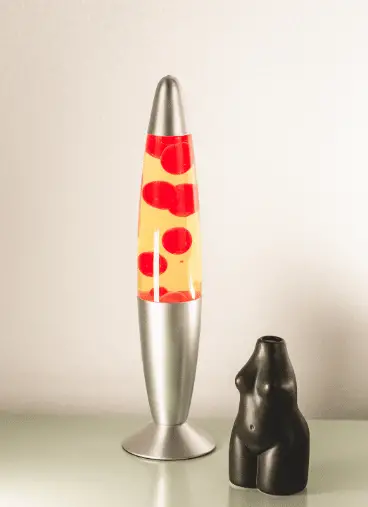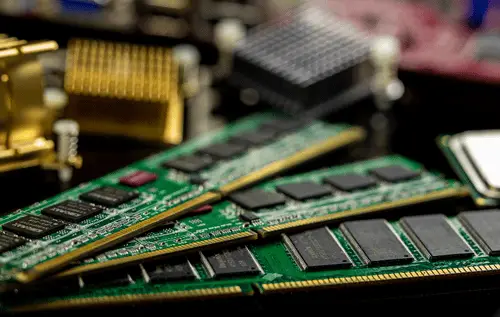The 1960s were a time of incredible growth in technology, from the advent of computers to space exploration. The United States had just entered into the Cold War with the Soviet Union, and both countries were competing to be at the forefront of technological advancement. Let us look at the most obvious inventions of the 1960s.
The inventions of the 1960s ranged from the development of the first weather satellite to the creation of Wonderbra, cassette tapes, and Valium. However, it was not just technological innovation that drove this era; there were also significant advancements made in scientific research and understanding as well.
Inventions were not limited to technological advancements only. The decade also saw advances in medicine, including penicillin becoming available for use by humans and various vaccines being developed.
Here’s a List of 20 Inventions in the 1960s
1. Invention: Weather Satellite

– Date of Invention: 1960
– Inventor: NASA
This was the era of space exploration and technological innovation when people could finally imagine how life would look in the future.
In 1960, NASA launched its first weather satellite into orbit. Its purpose was simple: to transmit information about the Earth’s atmosphere back down to ground stations on Earth.
This was an important innovation because it allowed meteorologists on the ground to receive information about weather conditions from space in real time.
The invention of this technology has had lasting implications for weather forecasting today—and it shows no signs of stopping!
Weather satellites are used to monitor the Earth’s atmosphere and surface environment, including temperature, clouds, water vapor content, wind direction and speed, storm systems, and precipitation amounts.
They also provide data on atmospheric pressure (altitude), and ozone concentrations (which can be monitored for pollution levels) as well as providing information on cloud formation such as volcanic eruptions.
2. Invention: Bubble Wrap

– Date of Invention: 1960
– Inventors: Alfred Fielding and Marc Chavannes
Another invention from this time period was bubble wrap; a material that is used in packaging today to protect fragile items, like electronic equipment, during shipping or storage.
In 1965, engineers Marc Chavannes and Alfred Fielding invented bubble wrap, while they were trying to find a way to ship fragile items like electronics in a way that they wouldn’t get damaged during transit.
Since then, people have used it in all sorts of ways: as insulation for windows or pipes, as padding under rugs or furniture o reven as soundproofing on walls.
The bubble wrap is made out of a thin plastic film that is blown up with air into a series of small bubbles.
The bubbles are arranged in rows on the film, which is then wrapped around an object such as a vase or plate.
The air in the bubble acts as a cushion to protect the object from damage during travel or storage.
We adopted it so well, that it’s hard to imagine shipping an item without bubble wrap nowadays.
3. Invention: A light-emitting diode (LED)

– Date of Invention: Nick Holonyak Jr. Back then
– Inventor: John G. Kemeny and Thomas E. Kurtz
LEDs (light emitting diodes) were invented by Nick Holonyak, Jr., who is also known for inventing the first visible-spectrum LED in 1962.
At the time, however, they were not very efficient and only produced light in one color: red.
John G. Kemeny and Thomas E. Kurtz made significant improvements to this technology by adding a second layer to the LED structure and creating a more efficient circuit design that allowed them to produce white light from a single device instead of just red.
Their work also led to LEDs being used in computer monitors, televisions, traffic lights, and other forms of lighting across the world today.
LEDs have many advantages over other types of light sources.
They can be made to emit different colors or wavelengths, so they can be used for signaling purposes as well as lighting up an area with a specific color temperature.
They are also very durable and long-lasting compared to other types of lights.
While they have been around for more than 50 years now, there is still room for improvement in this technology.
It has the potential to become even more reliable and efficient than it already is today!
4. Invention: BASIC (Programming Language)

– Date of Invention: 1963
– Inventor:
The BASIC programming language was invented in 1963. BASIC stands for Beginners All-purpose Symbolic Instruction Code, and it is designed to be easy for beginners to learn and use.
The language was originally designed for the IBM 1130 computer, but it has since been ported to many different platforms and extended with additional features.
While other languages have been developed since then that are more powerful or flexible, BASIC remains very popular among hobbyists, who can get started with just a few lines of code.
It is one of the most widely used programming languages in history. It is estimated that tens of millions of people have learned how to program using BASIC.
It has been used for creating games and other software applications, as well as scientific applications like visualizations and simulations.
5. Invention: Lava lamp (Astro Lamp)

– Date of Invention: 1963
– Inventor: Edward Craven Walker
The Lava lamp (Astro Lamp) was invented in 1963 by Edward Craven Walker, who was looking to create a lamp that would both change the mood in a room and provide a source of light.
The lamp consists of two main parts: a base and an oil-filled globe that sits on top of it. The base contains water, which heats up when electricity passes through it.
As this water warms up, it rises to the top of the globe, where it meets some kind of wax, typically paraffin or silicone, that has been heated in advance.
When these two elements meet, they begin to melt and form a liquid that flows down into the globe like lava from a volcano.
As electricity continues to pass through the base’s coils, heat builds up inside them as well, causing more liquid wax to rise from below.
6. Invention: Cassette tape

– Date of Invention: 1963
– Inventor: Lou Ottens
In 1963, Lou Ottens invented the cassette tape. It was a groundbreaking invention that changed the way we consumed music.
The cassette tape was a revolutionary invention because it allowed people to listen to music on portable devices.
Not only in their cars but also on their headphones, which meant they could listen to music anywhere they wanted.
These tapes were also relatively inexpensive, which made them even more accessible to everyone.
Cassette tapes work by recording sound waves onto magnetic tape in a pattern that can be played back later by placing a needle in the grooves on the tape and running it through an electromagnetic head.
The invention led to other technologies that we use nowadays from CD/DVD ROMs to actual hard drives that store billions of data worldwide.
7. Invention: Video Disk

– Date of Invention: 1963
– Inventor: David Paul Gregg
Video disks, also known as laser discs, were invented in 1963 by David Paul Gregg.
The video disk was a new kind of storage medium for video signals: it was a flat disc that could store several hours of footage.
The first generation used analog technology to encode information on the surface of the disc.
A laser would read this information and convert it into an electrical signal that was then converted back into the light and projected onto a television screen.
The second generation of video disk used digital technology instead of analog technology.
This meant that the laser would read pits on the surface of the disc rather than an electrical signal from an analog signal.
This allowed for more efficient storage space and better picture quality because there was no need for processing between reading and projecting images onto screens (as with analog signals).
8. Invention: Smiley face logo

– Date of Invention: 1963
– Inventor: Harvey Ross Ball
The smiley face logo was invented in 1963 by Harvey Ross Ball.
It was used to promote the idea that people should be happy at all times, and it’s still used today as a way to communicate that message.
The smiley face logo is one of the most iconic symbols in marketing history. It is used to convey a positive message and improve the mood of its viewers.
We can often see it in advertising, but can also be found on clothing or other merchandise.
The simplicity of the image and its ability to elicit a positive response from consumers makes it a popular choice for companies looking to promote their products or services.
9. Invention: Valium
– Date of Invention: 1963
– Inventor: Leo Sternbach
Valium is a medication used to treat anxiety and alcohol withdrawal symptoms. It also has been used to relieve muscle spasms and tension, as well as treat seizures.
The drug was invented in 1963 by Leo Sternbach, a chemist at Hoffman-La Roche, who synthesized it from meprobamate.
Valium became a popular drug in the 1960s when it was approved by the Food and Drug Administration (FDA) for use as an anti-anxiety medication.
It soon became known as one of the most prescribed drugs in America, with more than 200 million prescriptions written in its first three years on the market.
It’s commonly used to treat anxiety disorders and panic attacks, but can also be used to treat insomnia.
Valium is also used to relieve muscle spasms, control epilepsy seizures, treat alcohol withdrawal symptoms, and prevent motion sickness.
It’s important to follow your doctor’s instructions when taking Valium because there are some side effects you should be aware of including drowsiness, dizziness, and confusion!
10. Invention: Wonderbra
– Date of Invention: 1964
– Inventor: Louise Poirier
The 1960s saw a lot of inventions, but perhaps none were as revolutionary as the Wonderbra.
In 1964, Louise Poirier invented the bra that would forever change how women shop for underwear.
The Wonderbra was designed to give women fuller cleavage, which is something that many women at the time were seeking.
It was made out of special material that would hold up under pressure and give women the appearance of having larger breasts.
The original Wonderbra looked nothing like modern-day bras; its design looks more like an undergarment than anything else!
But despite its odd appearance, it worked well at giving women better support and lift than other bras did at the time.
11. Invention: Computer Mouse

– Date of Invention: 1964
– Inventor: Douglas C. Engelbart
The computer mouse was invented by Douglas C. Engelbart in 1964.
This is a peripheral device that allows the user to control the cursor on a graphical user interface (GUI) of a computer system.
It typically has two buttons and may also have wheels, trackpads, or other controls.
The GUI uses icons and menus to represent commands instead of text-based interfaces, which were used in earlier systems.
The icon-based nature of the GUI means that it is easier for users to learn and use than previous text-only interfaces such as command lines.
Since its invention in 1964, the computer mouse has gone through many changes with respect to its size, shape, and functionality.
The use has become increasingly popular over the years as it has made computers far more user-friendly and easy to use.
12. Invention: Kevlar (Poly-paraphenylene terephthalamide)
– Date of Invention: 1964
– Inventor: Stephanie Kwolek
Kevlar is a synthetic fiber that’s made of poly-para phenylene terephthalamide and has a wide range of uses.
It is one of many synthetic polymers that have revolutionized modern life.
This material was invented by Stephanie Kwolek in 1964 as part of an attempt to make a more heat-resistant material for bulletproof vests.
Nowadays, it’s used for everything from protective clothing to formula 1 cars and boats, but also bulletproof vests and other tools for police officers and soldiers.
It is also very popular in the automobile industry for car doors, car roofs, helmets, and more. This material is five times stronger than steel but weighs just one-fifth of what steel does.
In addition to being incredibly strong and lightweight, kevlar is also very flexible, as it can be stretched and bent to a certain degree, without internal damage.
13. Invention: Aspartame

– Date of Invention: 1965
– Inventor: James M. Schlatter
This was a time of great invention, and one of the most important inventions in the 1960s was Aspartame.
Aspartame is used today to sweeten foods and beverages, including diet sodas and other low-calorie drinks.
Aspartame was invented in 1965 by James M. Schlatter, a chemist working for the pharmaceutical company at the time.
He discovered aspartame while trying to create a cure for stomach ulcers.
Instead, he found that aspartame could be used as an artificial sweetener, which could help people avoid ingesting too much sugar in their diet.
Today, Aspartame is the most popular artificial sweetener in the world and is used in many products including soft drinks, chewing gum, tabletop sweeteners, and even diet foods like yogurt and sauces.
14. Invention: Compact Disc (CD)
– Date of Invention: 1965
– Inventor: James Russell
In 1965, James Russell invented the compact disk. It was a new technology that made it possible to store music in digital form on a small disc.
It was a huge improvement over vinyl records and cassettes at that time.
The compact disk is still used today as a medium for storing music, but it has also been used for other purposes.
For example, these discs are often used to store computer software installation files or programs themselves. They can also be used for data backup purposes.
Compact discs are now being replaced with other technologies such as DVDs or Blu-Ray discs, or even solid-state storage drives.
These provide more space and faster read/write times while becoming cheaper for the masses to use.
15. Invention: Handheld Calculator

– Date of Invention: 1967
– Inventor: Texas Instruments
The handheld calculator was invented in 1967 by Texas Instruments.
It was the first handheld calculator that ran on batteries and could be used to perform basic math functions.
And back then, this was a big deal! The calculator could add, subtract, multiply and divide, and had a memory function so you could store numbers in it for future use.
This meant that you no longer had to carry around pencils and paper when you needed to do quick calculations. All you needed was your trusty handheld calculator!
Today’s handheld calculators are much more advanced than their predecessors.
They have more buttons, can solve more types of math problems, and even have memory storage for multiple numbers at once.
You can use these devices for anything from balancing your checkbook to calculating your taxes.
16. Invention: DRAM (Dynamic Random Access Memory)

– Date of Invention: 1967
– Inventor: Robert Heath Dennard
It’s hard to believe that the invention of the DRAM (Dynamic Random Access Memory) was just 50 years ago.
This invention is used in most modern computers, and it was invented by Robert Heath Dennard in 1967.
The first DRAM was created using a small grid of transistors and capacitors connected together on a single chip.
The capacitors were charged with electricity, which could be drained off when they were needed to store information.
This allowed them to hold onto data even when they weren’t powered up or connected to other parts of the computer system.
Today, most computers still use DRAM chips in their processors as well as other components like graphics cards and memory cards for storing data from cameras or phones.
It’s also used for storing data on hard drives so that you can access it later, even if your computer crashes (which happens more often than we’d like!).
Since its invention fifty years ago, there have been many improvements made in terms of both speed and capacity for these types of chips, but most things still run off them today!
17. Invention: 911 Call
– Date of Invention: 1968
– Inventor: AT&T
The 911 call was invented in 1968 by AT&T. It was designed to be used in cases of emergency and to connect people to the police, fire department, or ambulance services.
This call can be made from any telephone in the United States or Canada (including cell phones).
The first 911 call was made on February 16, 1968, to report a fire in Haleyville, Alabama.
Since then, nearly all US phone carriers have adopted the three-digit emergency call number.
The 911 call (or similar variations) is now used by almost every country in the world.
18. Invention: Video game console

– Date of Invention: 1968
– Inventor: Ralph Baer
Since the invention of programming languages like BASIC and the advancement in technology in this era, it was only a matter of time before someone uses new tech for fun.
And so, the video game console was invented in 1968 by Ralph Baer.
It was a revolutionary invention because it allowed people to play games on their television set instead of using the arcade machine or going to a bowling alley to play a game.
The video game console was originally used to play games like Pong and Pac-Man, but now it’s used for many other things as well!
Today’s consoles have more advanced graphics and are able to run more sophisticated programs than the original ones could.
They can also connect to the internet and give access to streaming services.
19. Invention: ATM

– Date of Invention: 1969
– Inventor: Fred J. Gentile and Jack Wu Chang
The ATM was invented by Fred J. Gentile and Jack Wu Chang in 1969.
These machines allow people to withdraw money from their bank accounts without having to go inside a bank.
It was originally used only by banks, but over time has been adopted by other organizations that need to manage large amounts of cash, such as casinos.
Today, ATMs are used in many places: grocery stores, gas stations, airports, hotels, and other places where people may need access to cash quickly and easily.
There are many types of ATMs; some dispense bills only, while others dispense both bills and coins.
Some have even touch screens for easier use and some have an option for depositing checks instead of cashing them at the bank.
In any case, this is one of the inventions we probably cannot imagine living without in the modern era.
20. Invention: UNIX
– Date of Invention: 1969
– Inventors: Dennis Ritchie and Ken Thompson
In 1969, UNIX was invented by Dennis Ritchie and Ken Thompson. This operating system is used to run servers, desktops, and mobile phones today.
UNIX is a multi-user system, which means that more than one user can use the same machine at the same time.
In this sense, it’s similar to Windows or macOS. But unlike those operating systems, UNIX is open source, meaning anyone can look at its code and modify it as they wish.
This makes it very stable because there are many people who are working on fixing bugs in it all the time.
The main reason why UNIX is used in servers and desktops today is that it’s very efficient.
It uses less memory than other operating systems so you don’t need as much hardware to run your software on top of it.
7 Famous Inventors From The 1960s
The 1960s were a big time for inventors. The US was still in the midst of its space race with Russia, and the Cold War was heating up.
It was also a time when women were gaining more rights, and people were beginning to think about how things like pollution could affect the Earth.
The inventors of the 1960s were more than just scientists! They were visionaries who made huge strides in technology, medicine, and science education.
Here’s a list of some of our favorites!
1. James M. Schlatter (1942)
James M. Schlatter was a scientist who developed the artificial sweetener aspartame, which is used in many sodas and other beverages today.
Allegedly, he was born on January 1, 1942, in Brooklyn, New York and he attended Brooklyn Technical High School before going to Cornell University for his undergraduate degree.
In 1966, he received his Ph.D. from Purdue University for his research on amino acids and their role in proteins.
That same year he began working as a researcher at G.D Searle and Company where he would work until 1977 when he left to start his own company called Enzymotec Corporation.
Schlatter’s research into how the body breaks down various substances led him to various discoveries that helped science.
2. Leo Sternbach (1908-2005)
Leo Sternbach was a chemist and a scientist who made significant contributions to the field of medicine.
He is best known for his creation of Librium and Valium, which are now two of the most widely prescribed drugs in the world.
In addition to his work in pharmacology, Sternbach also published over 200 scientific papers during his career.
He worked at Roche Pharmaceuticals for quite a few years and was responsible for developing some of their most important products.
Allegedly, Sternbach was born on May 15th, 1908 in Vienna, Austria. He studied chemistry at the University of Vienna before moving to England in 1930 to continue his studies at Imperial College London.
In 1938 he married Gertrude Steinhausl who was also Jewish and therefore had to flee Austria when war broke out between Germany and Austria in 1939.
In the end, they settled down in New York City where they had two children.
Leo Sternbach was ranked top 25 most influential US citizens of the 20th century by US News inc. and World report.
3. Ralph Baer (1922-2014)
Ralph Baer, born in 1922 and died in 2014, was an American scientist who is most well-known for his inventions. He was a pioneer in the field of video games.
He was born and raised in Germany, but he immigrated to the United States in 1938 after Germany started to persecute Jews.
He served in the Army during World War II and then went on to study electronics at Drexel University.
He worked as a television engineer and as an inventor at Sanders Associates from 1958-1967 before founding his own company, Sanders Associates Inc., where he worked until 1983.
Baer’s most famous invention is arguably the first video game console, which he created with help from other engineers at Sanders Associates Inc.
The device was called “Brown Box”, and it was designed for use by individuals with disabilities who needed access to visual feedback or interaction, to play games, or to perform other tasks.
4. David Paul Gregg (1923-2001)
David Paul Gregg was a scientist who made significant contributions to the field of engineering.
He was born on March 11th, 1923, and passed away on November 8th, 2001.
He was an American engineer that was most known for his invention of optical disks.
He worked for 3M’s Mincom and later formed his own company, named Gauss Electrophysics.
He was known for always trying to focus on consumers rather than profit, as he wanted his products to be cheap, simple, and effective.
His work led to new technologies like DVDs, Blue Rays, and eventually, completely new ways of storing data.
5. Stephanie Kwolek (1923-2014)
Stephanie Kwolek was a chemist and scientist who developed the first Kevlar fiber in 1964. She was born on July 31, 1923, in Pittsburgh, Pennsylvania.
She attended the Carnegie Institute of Technology and graduated with a bachelor’s degree in chemistry.
She then went on to work at DuPont’s Experimental Station, where she would eventually be employed for over 40 years.
Kwolek discovered kevlar while working on a project that was meant to create a synthetic replacement for steel cables that were used in tires.
Her team had been trying to develop polymers with fiber-like properties that could withstand heat or pressure without breaking or losing their strength.
In 1964, she created a solution that did not lose its strength even when exposed to high temperatures or pressures.
This material turned out to be stronger than any other known synthetic substance at the time!
6. James Russell (1931)
James Russell is an American scientist and inventor, who was born in 1931 in Bremerton, Washington.
He finished his degree in physics in 1953 from Reed College in Portland and was later employed by the company General Electric.
It was there where he made his first invention; the electron beam welder.
In 1965, he invented the optical recording and playback device, which made him the most recognition.
Since then, he invented a lot of other devices, patents, and gadgets that are still in use today.
He is also considered one of the most influential people in the digital revolution of the world.
7. Lou Ottens (1926-2021)
Lou Ottens (1926-2021) was a Dutch engineer and inventor, best known as the inventor of the cassette tape.
Inventing a new way to record sound on a medium would seem like an impossible feat for most people, but not everyone has Lou Ottens’ background.
He grew up in an era when radio was still in its infancy and television was just getting started.
Ottens was employed by Philips for the entirety of his career, where he worked on various projects that helped to shape the world we live in today.
He is also known for his work in helping to develop the compact disc.
Final Thoughts
Also check out other interesting inventions in 1800, 1950, and 1920!
The ideas of the 60s were quite ahead of their time. Many exemplified what would become common practice in subsequent decades, while others suggest alternate paths that we may not have followed.
Regardless of the case, these innovations and concepts set us on the path toward the world we live in today.
For example, there were inventions such as the telephone, television, computer, microchip, etc.
Researchers and scientists invented these new technologies because they wanted to give us different and improved ways of communicating with each other using modern methods of telecommunication.
The inventions of the 1960s brought incredible technology into our lives that we take for granted today.
We need to remember that not so long ago our only means of communication was a landline phone with a rotary dial or a cheap payphone and being connected to the internet was reserved for highly privileged people.


